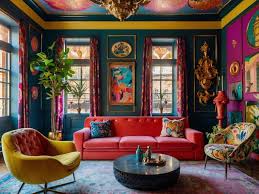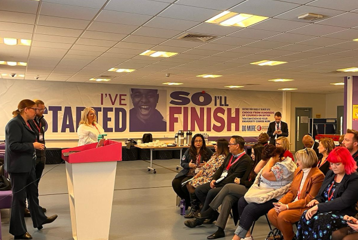Life Style
Exploring the World of Design Backgrounds: The Essence of Visual Aesthetics
Published
11 months agoon
By
Admin
In the world of design, backgrounds play a crucial role in shaping the overall aesthetics and functionality of a visual piece. Whether it’s a website, a poster, a digital advertisement, or even a simple social media post, the background sets the tone, mood, and context for the entire design. This article delves into the multifaceted aspects of design backgrounds, exploring their importance, types, and best practices for creating effective and visually appealing backgrounds.
Importance of Backgrounds in Design
Backgrounds are more than just a canvas for foreground elements; they are foundational to the perception and effectiveness of a design. Here are several reasons why backgrounds are essential:
- Setting the Mood: The background can convey the mood or atmosphere of the design. For instance, a dark, textured background can evoke a sense of mystery or elegance, while a bright, colorful background can create a cheerful and vibrant feel.
- Enhancing Readability: A well-chosen background can enhance the readability of text and other elements. It can provide contrast that makes the foreground elements stand out more clearly.
- Creating Depth: Backgrounds can create a sense of depth and dimension in a design. Through techniques like gradient shading, blurring, or layering, backgrounds can give a flat design a more three-dimensional feel.
- Guiding the Viewer’s Eye: Backgrounds can be used to guide the viewer’s eye to key elements in the design. Subtle gradients or directional textures can lead the eye towards important focal points.
- Establishing Brand Identity: For businesses and brands, backgrounds are an extension of their visual identity. Consistent use of colors, patterns, and textures that align with the brand’s identity can reinforce brand recognition and loyalty.
Types of Design Backgrounds
Design backgrounds come in various forms, each with its unique characteristics and applications. Some of the most common types include:
- Solid Color Backgrounds: These are the simplest form of backgrounds, consisting of a single color. They are often used for minimalistic designs or when the focus needs to be on the foreground elements.
- Gradient Backgrounds: These backgrounds feature a gradual transition between two or more colors. Gradients can add depth and interest to a design without being too distracting.
- Textured Backgrounds: Textures can add a tactile feel to a design. Common textures include wood, fabric, paper, and stone. These backgrounds are often used to create a more organic and natural look.
- Patterned Backgrounds: Patterns involve repeating elements such as shapes, lines, or images. They can be subtle or bold, depending on the design’s needs. Patterns can add a playful or sophisticated touch to a design.
- Image Backgrounds: Using photographs or illustrations as backgrounds can create a powerful impact. Image backgrounds are often used in web design, posters, and advertisements to convey specific themes or messages.
- Abstract Backgrounds: These backgrounds include abstract shapes, colors, and forms. They are often used to create a modern, artistic, or futuristic feel.
Best Practices for Creating Effective Backgrounds
Creating effective backgrounds requires a balance between aesthetics and functionality. Here are some best practices to consider:
- Maintain Contrast: Ensure there is enough contrast between the background and the foreground elements. This is crucial for readability and visual hierarchy. Text and important elements should stand out against the background.
- Consider Simplicity: Backgrounds should complement, not overpower, the main content. Avoid overly complex or busy backgrounds that can distract from the primary message.
- Align with the Brand: The background should align with the overall brand identity. Consistent use of brand colors, patterns, and textures helps in maintaining a cohesive look and feel.
- Use High-Quality Images: If using images, ensure they are of high resolution and quality. Blurry or pixelated backgrounds can make the entire design look unprofessional.
- Experiment with Blurring: Blurring can be an effective technique to ensure the background does not compete with the foreground elements. It can also add a sense of depth and focus.
- Responsive Design: For digital designs, ensure that the background adapts well to different screen sizes and resolutions. Responsive design is key to maintaining visual appeal across various devices.
- Test Different Options: Don’t settle for the first background you create. Experiment with different colors, textures, and patterns to see what works best. A/B testing can be particularly useful in web design to determine which background performs better in terms of user engagement.
The Evolution of Backgrounds in Design
The concept of backgrounds in design has evolved significantly over time. In the early days of web design, backgrounds were often simple and utilitarian. However, as technology and design principles have advanced, backgrounds have become more sophisticated and integral to the overall design strategy.
- From Static to Dynamic: Early web backgrounds were typically static images or colors. Today, we see dynamic backgrounds that change based on user interactions, time of day, or even user preferences. Parallax scrolling, where background images move at a different speed than the foreground content, is a popular technique that adds a sense of dynamism and engagement.
- Incorporation of Motion: Animated backgrounds have become more common, adding a layer of interactivity and visual interest. Subtle animations, such as a moving gradient or a slow video loop, can make a design feel more alive and engaging.
- Integration with User Experience: Modern design practices place a strong emphasis on user experience (UX). Backgrounds are now designed with UX in mind, ensuring they enhance rather than hinder the user’s interaction with the design. This includes considerations for accessibility, such as ensuring sufficient contrast for users with visual impairments.
- Personalization: With advancements in data analytics and user profiling, backgrounds can be personalized based on user behavior, preferences, or demographics. Personalized backgrounds can create a more tailored and relevant experience for the user.
Conclusion
Design backgrounds are a critical component of visual design, playing a pivotal role in setting the tone, enhancing readability, and creating an engaging user experience. From solid colors to dynamic animations, the possibilities for backgrounds are vast and varied. By understanding the importance of backgrounds and following best practices, designers can create visually stunning and effective designs that resonate with their audience. The evolution of backgrounds in design reflects the broader trends in the design industry, emphasizing creativity, interactivity, and user-centric approaches. As technology continues to advance, the potential for innovative and impactful background designs will only grow, offering exciting opportunities for designers to explore and create.
You may like


Clipart: T4H-X66PIH4= Turkey: Creative Uses & Benefits

Key Software Systems: Leading Innovation in Courier Delivery Management

Refrigerated Trailers Benefits and Uses

Jessica Dorrell: A Comprehensive Overview

minecraft (2009) game icons banners

Everything You Need to Know About 24 Hour Fitness Membership Plans and Costs

wallpaper:znvmimg_hwe= stitch

drawing:_k5ftwawefm= pinterest

How Much Does Golden Corral Cost for Adults? Understanding Golden Corral Adult Prices

Understanding IP Gacor: A Comprehensive Overview

Welcome to Simp City Forum!

Best Website For Overseas Soccer Relay

What Skateboarding Does To Your Body

Stages of Registration of a Company As An LLC

Navigating the World of News: A Guide

The Allure and Significance of Lavender Farms

Mastering the Drawing: A Step-by-Step Guide to Basketball

Exploring newbie blogs: A deep dive into the world of networking insights

How to Sign In to Kahoot: A Comprehensive Guide

Discover the Journalism Excellence of the Jerusalem Post

Clipart: T4H-X66PIH4= Turkey: Creative Uses & Benefits

Key Software Systems: Leading Innovation in Courier Delivery Management

Refrigerated Trailers Benefits and Uses

Jessica Dorrell: A Comprehensive Overview

minecraft (2009) game icons banners

Everything You Need to Know About 24 Hour Fitness Membership Plans and Costs

wallpaper:znvmimg_hwe= stitch

drawing:_k5ftwawefm= pinterest

How Much Does Golden Corral Cost for Adults? Understanding Golden Corral Adult Prices
















